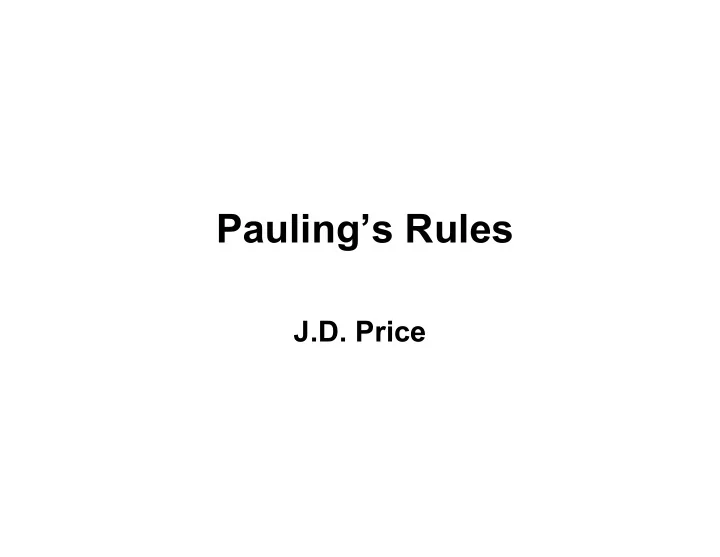

Pauling’s Rules J.D. Price
Pauling's Rules Rule 1. Interatomic Distance . A coordination polyhedron of anions is formed about each cation. The cation-anion distance being determined by the radius sum and the coordination number of the cation by the radius ratio. Rule 2. Electrostaic Valency Principle . In a stable coordination structure, the total strength of the valency bonds that reach an anion from all neighboring cations is equal to the charge of the anion. Rule 3. Sharing of Polyhedral Elements I . The existence of edges and particularly of faces, common to two coordination polyhedra decreases the stability of ionic structures. Rule 4. Sharing of Polyhedral Elements II . In a crystal containing different cations, those with large valence and small coordination tend not to share polyhedral elements with each other. Rule 5. Principle of Parity . The number of essentially different kinds of constituents in a crystal structure tends to be small.
Rule 1. Interatomic Distance . A coordination polyhedron of anions is formed about each cation. The cation-anion distance being determined by the radius sum and the coordination number of the cation by the radius ratio. **Old news to us** Now is the time to talk of the limitations: 1. Ionic radii - and an approximation 2. Ionic - you mean % ionic 3. What if we are close to a limiting value
Rule 2. Electrostatic Valency Principle . In a stable coordination structure, the total strength of the valency bonds that reach an anion from all neighboring cations is equal to the charge of the anion. V = Strength CN Na Cl V = ? 0.11 nm 0.172 nm CN =?
Rule 3. Sharing of Polyhedral Elements I . The existence of edges and particularly of faces, common to two coordination polyhedra decreases the stability of ionic structures. Why?
Rule 4. Sharing of Polyhedral Elements II . In a crystal containing different cations, those with large valence and small coordination tend not to share polyhedral elements with each other. Highly charged cations (e.g. +4), particularly small ones, repel other highly charged cations - difficult to allow them to share more than one oxygen.
Rule 5. Principle of Parity . The number of essentially different kinds of constituents in a crystal structure tends to be small. Simple is Good!
Recommend
More recommend